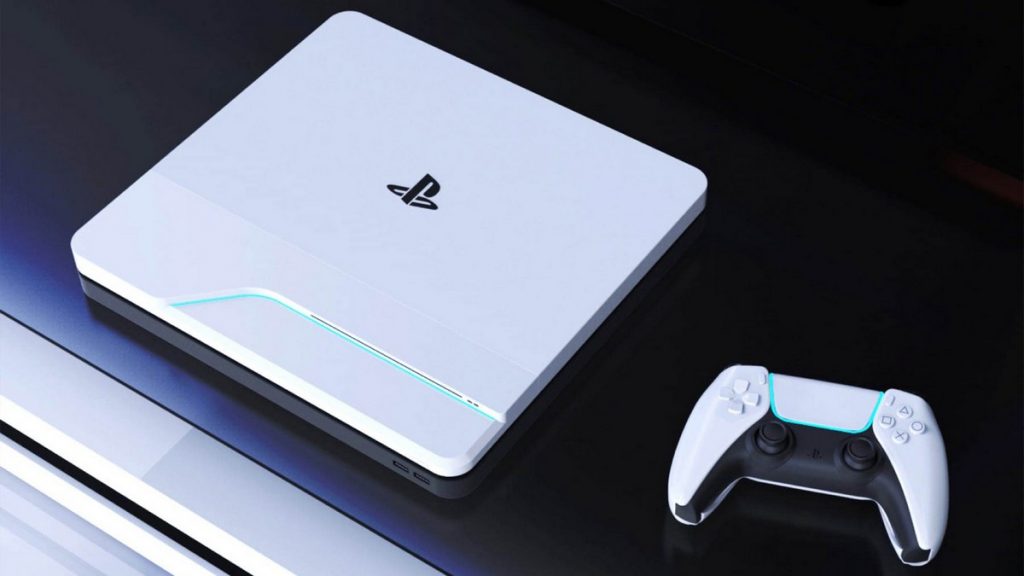The Marketing mix of PlayStation analyses the 4Ps of PlayStation, including the Product, Price, Place, and Promotions. The PlayStation marketing mix has helped the brand to create strategic marketing strategies that have proved invaluable in reaching out to potential customers through new technology and providing a new gaming experience to the gamers in the target market.
The PlayStation marketing strategy framework focuses on market research process strategy, product planning, products, channel partners, personal selling, distribution strategy, pricing policies, and promotion activities like email marketing to increase sales and capture the number one market position in the gaming industry.
Table of Contents
Introduction: Sony PlayStation
# Sony PlayStation
- Origin Country: Japan
- Product: Video Game Console
- Owner: Sony Interactive Entertainment ( A Division of Sony Corporation)
- Launched: 1994
The video game brand PlayStation is one of the world’s most popular, renowned, and preferred gaming consoles.
Japan has been acknowledged as one of the top countries to launch a gaming system with new technology worldwide. Sony Interactive Entertainment, a leading brand from Sony Corporation, was one of the many companies that decided to introduce premium new Sony products and target gamers.
In the 90s, Nintendo was a household name in gaming consoles. Sony Corporation decided to enter the gaming industry with a partnership with Nintendo, which later chose to partner with Philips instead, leaving Sony hanging in the middle.
This led to the launch of PlayStation, which later managed to dethrone Nintendo in the home consoles market, although Nintendo still holds a dominating share in the handheld gaming market. The original PlayStation managed sales figures of 100,000+ units on its first day in Japan and was the first console to ship 100+ million units within a decade. Currently, the two main competitors of Sony PlayStation are Microsoft and Nintendo.
PlayStation Product Strategy
The Sony PlayStation marketing strategy focuses on Sony PlayStation products and their innovation down the line so that there is curiosity in the industry about what is next. The company’s core gaming product is the video game console, which is quite popular amongst customers.
Sony PlayStation manufactures video games for consoles, and some of the popular Sony products include PlayStation 5, PlayStation App, PlayStation 4, PlayStation Vita, and Accessories.
Over the years, Sony products like the PlayStation have faced stiff competition from Microsoft’s Xbox and Nintendo handheld gaming. However, customer loyalty towards Sony products has helped the company create a strong position in the industry.
The new Product Mix of PlayStation in 2023 is as follows (Source).
- Gaming Consoles: This is the core of PlayStation’s product line. It includes: PlayStation 5 (PS5): The latest in their line of home video game consoles, offering advanced graphics, fast processing, and a new generation of games; PlayStation 4 (PS4): An older model but still popular, known for its extensive library of games; PlayStation 4 Pro: An upgraded version of the PS4, offering enhanced performance and graphics.
- Handheld Consoles: Although PlayStation Vita was discontinued, it remains a part of their historical product mix. It was known for its ability to play PS4 games remotely and its unique game library.
- Virtual Reality (VR): PlayStation VR (PS VR): A virtual reality headset compatible with PS4 and PS5, offering immersive gaming experiences.
- Accessories: DualSense Wireless Controllers: The latest controllers with haptic feedback and adaptive triggers; DualShock 4 Controllers: For the PS4, known for their ergonomic design and touchpad; Other accessories include headsets, charging stations, and camera peripherals.
- Subscription Services: PlayStation Plus: A subscription service offering free games, online multiplayer access, and other perks; PlayStation Now: A cloud gaming service allowing users to stream or download games.
- Software and Games: A wide range of video games developed by Sony’s studios or third-party developers, including exclusive titles like “The Last of Us,” “God of War,” and “Spider-Man.”
- PlayStation Network: An online service providing access to the PlayStation Store, online multiplayer gaming, digital media, and social networking.
- PlayStation App and Other Digital Offerings: Mobile apps and services that enhance the PlayStation experience, including remote play and second-screen features.
- Merchandise: Branded merchandise like clothing, bags, and collectibles.
- PlayStation Studios: A group of game development studios owned by Sony that produce exclusive games for PlayStation consoles.
PlayStation Place Strategy
Sony PlayStation’s marketing strategy is to become a global provider of consumer electronics, gaming products, video games, and services worldwide. The PlayStation was first revealed in 1991 at the Consumer Electronics Show, and since then, the company has launched several innovative products and services at such events.
Sony has to depend upon the suppliers for the raw materials and other valuable parts needed in the production and development of both software and hardware. It uses Nvidia for graphic cards, IBM for creating processors, and Terra Soft Solutions for manufacturing Operating Systems.
PlayStation brand has been a market leader in gaming and has launched several games over the years. The products are a favorite of the customers, and this is why the target audience flocks to the large retail chains and Sony Stores, where they can purchase the desired items easily.
Here’s the place strategy of PlayStation.
- Global Retail Presence: PlayStation products are available in major retail stores worldwide, ensuring easy accessibility for consumers across different regions. This widespread distribution network includes electronics stores, department stores, and online retailers, making PlayStation consoles and games accessible to a global audience.
- Online Sales through PlayStation Store: The PlayStation Store is a digital marketplace where consumers can purchase and download games, add-ons, and other digital content directly to their consoles. This platform offers convenience and instant access to a vast digital content library.
- Specialized Gaming Retailers and Partnerships: PlayStation collaborates with specialized gaming retailers for exclusive launches and promotions. These partnerships often include bundle deals, special editions, and early access to games, enhancing the appeal for dedicated gamers.
- Direct-to-Consumer Sales via Official Website: Sony sells PlayStation consoles, accessories, and merchandise directly to consumers through its official website. This direct sales channel allows for controlled pricing, exclusive offers, and bundles that might not be available through other retail outlets.
- Localized Strategies for Different Markets: PlayStation adopts localized marketing and distribution strategies to cater to specific regional preferences and regulations. This includes customizing game offerings, participating in local gaming events, and offering region-specific promotions to appeal to diverse consumer bases.
PlayStation Pricing Strategy
Price plays one of the most critical roles in a marketing strategy because if it is not up to the mark, then customers will not purchase the products, and the whole procedure of manufacturing and reaching the end consumers via retail marketing channels will be a failure.
The manufacturing costs of Sony PlayStation are pretty high. In its report, Bloomberg stated that the initial cost of PlayStation 5 was nearly $450. After that, there were many other expenses, like the amount paid to vendors, retail channels, packaging, warehousing and shipment, etc.
The Sony PlayStation marketing strategy focuses on maintaining high-quality products out of the product and ensuring that competitors like Nintendo and Microsoft do not get the upper hand in the industry.
Sony earns money in the form of licensing fees, which the company collects when the developers sell their games. The brand also gets a 30% cut on all transactions that occur via online stores.
PlayStation’s pricing strategy reflects a blend of consumer-centric and market-driven approaches, showcasing a keen understanding of the gaming industry’s dynamics and consumer expectations. Here’s a breakdown of their competitive pricing strategy below:
- Competitive Entry Pricing: PlayStation consoles are typically introduced at competitive price points. This strategy is designed to penetrate the market quickly, attract a broad consumer base, and establish a solid initial presence against competitors. The initial pricing often aligns closely with production costs, reflecting a value-based pricing model that balances affordability with quality.
- Dynamic Pricing for Console Lifecycle: Throughout a console’s lifecycle, PlayStation strategically adjusts prices. This often involves reducing prices over time to tap into a broader market segment, including late adopters and price-sensitive consumers. This dynamic pricing approach helps sustain sales momentum throughout the product’s lifecycle.
- Premium Pricing for Cutting-edge Technology: For advanced hardware like PlayStation VR or the latest PlayStation 5, PlayStation adopts a premium pricing strategy. This reflects the added value of innovative features and technological advancements, targeting consumers who seek the latest and greatest gaming technology and are willing to pay a premium.
- Subscription-based Pricing for Services: PlayStation Plus and PlayStation Now offer gaming and online services through a subscription-based model. This approach provides a continuous revenue stream while offering players various games and features. The tiered pricing structure caters to different user needs and budget levels.
- Psychological Pricing in Game Titles and Add-ons: PlayStation employs psychological pricing strategies, like setting prices just below a round number (e.g., $59.99 instead of $60) for games and digital add-ons. This makes prices appear more attractive and can lead to higher sales volumes. Additionally, frequent sales and discounts on the PlayStation Store create a sense of urgency and value, encouraging more purchases.
- Bundling Strategy for Value Perception: By bundling consoles with popular games or accessories, PlayStation enhances the perceived value of its offerings. These bundles are often priced attractively compared to purchasing items separately, appealing to consumers looking for a complete gaming experience at a reasonable price.
PlayStation’s pricing strategy is multifaceted and evolves in response to market trends, competitive forces, technological advancements, and consumer behavior. This approach has helped PlayStation remain a leading brand in the dynamic and competitive gaming industry.
PlayStation Promotion Strategy
Promotion is the backbone of digital marketing and strategy as it helps to connect with the end customer and create a positive link that will lead to more significant sales and better profits. Sony PlayStation has adopted an aggressive promotion policy to create brand awareness, boost brand image, and increase brand visibility amongst customers.
The aggressive promotion and direct marketing strategy of Sony PlayStation includes-
Television Advertisements
PlayStation’s promotion strategy focuses on television advertisements as this traditional medium has a very high reach.
Magazines
Several magazines like PlayStation: The Official Magazine work with Sony to create demo discs. These are highly popular in the gaming community and act as promotion gimmicks.
Collaborations
The company has collaborated with Travis Scott to create a positive buzz in the industry.
Sponsorships
PlayStation’s promotion policy includes sponsorship deals. It was the kit sponsor of Ligue 1 clubs AJ Auxerre and Olympique Lyonnais from 1999 – 2007 and 2009 – 2010, respectively.
Online Advertising
Sony has used social media for online advertising and customer engagement. Posts about games and product information, etc., are shared on social media platforms like Twitter, Linked In, Instagram, and Facebook, as well as the company’s e-commerce website.
Exhibitions and Trade Fairs
Many exhibitions and trade Fairs show the upcoming PlayStation products to target customers. Electronic Entertainment Expo is one of the many exhibitions where other companies and gamers gather to look at the launch of a specific product. Sony PlayStation’s marketing and sales promotion strategy focuses on events like the Electronic Entertainment Expo to display and advertise its products.
Slogan
The various slogans “Play Has No Limits,” “See The Future,” “Move into Action,” It Only Does Everything,” and “The Ultimate Just Got Power” are very apt as they project the brand as a fundamental gaming system with a core gaming product.
Some Recent Video ads and Print ads for PlayStation are:
Liked this post? Check out the complete series on Marketing Mix


ok, using this for my class article. thinks buddy :)
Thanks I mean :(
You are most welcome :)
Gonna use some parts of it as well,
thx
no worries mate
Me three lol
What will be the promotion strategy for it?
Hey could u tell me about how Sony gather their information on customers in order to make better decision making? such as, taking surveys?